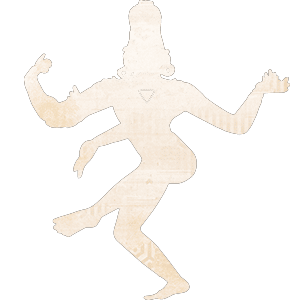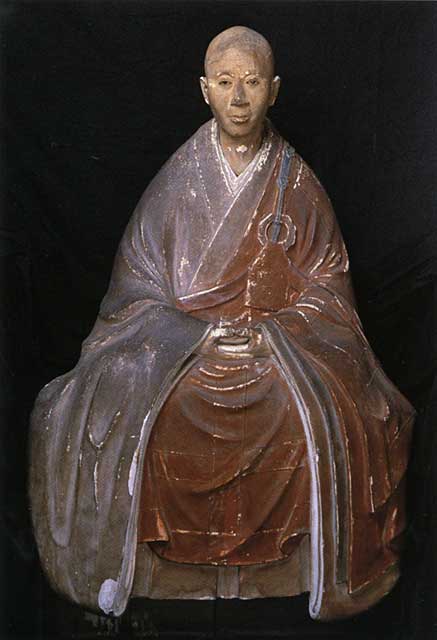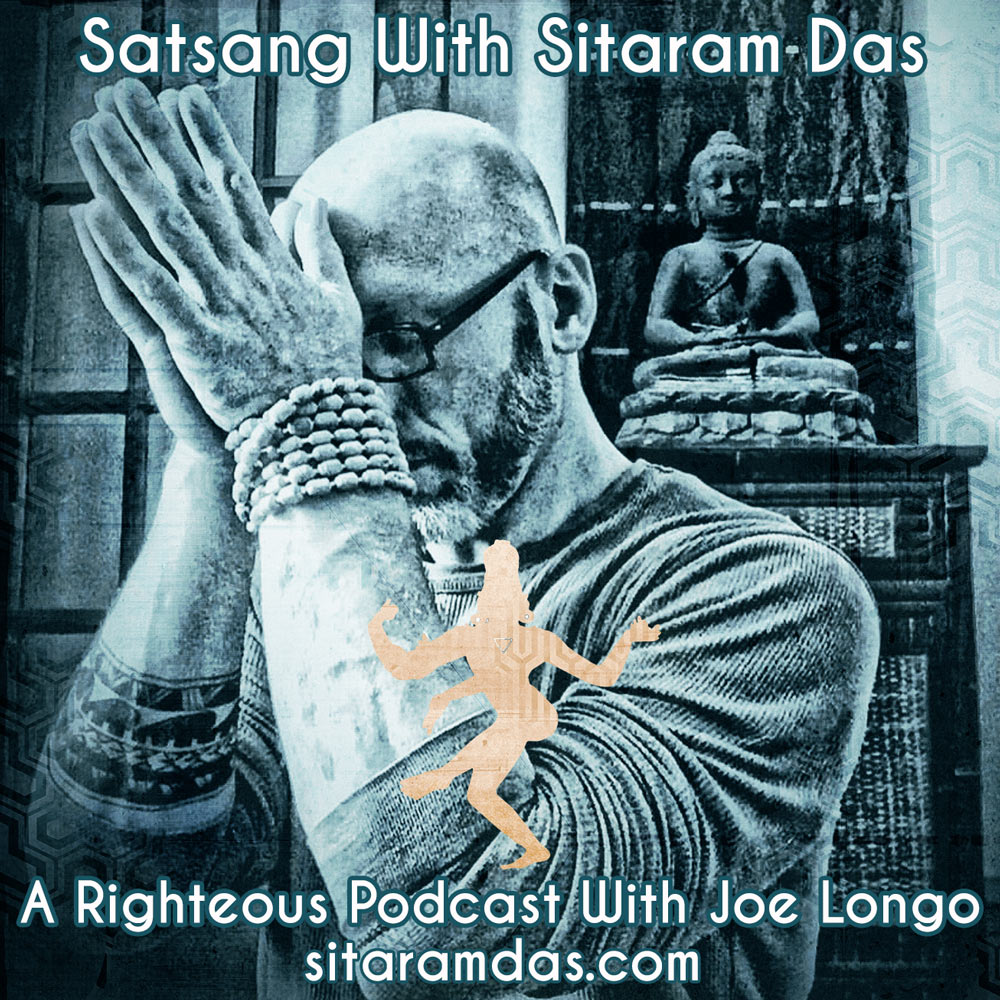by sitar | Mar 14, 2018 | Book Club, Coaching
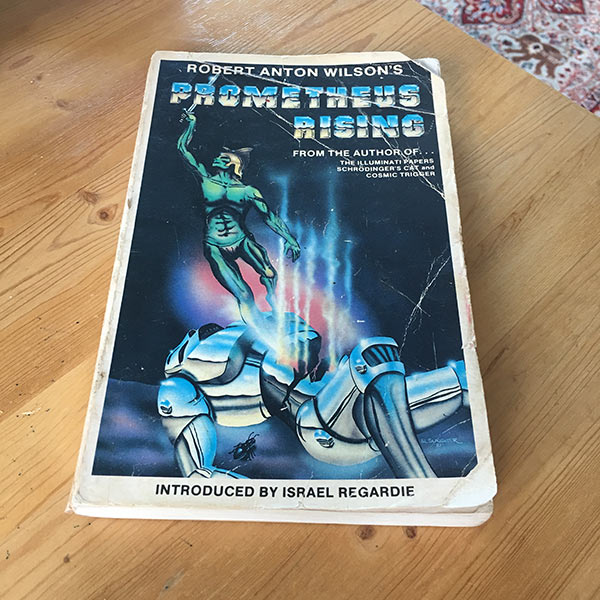
My 25 year old copy
High on the top of my list of things I’m grateful for is my exposure to amazing teachers and teachings. There is a world of fraud out there, unhelpful teachings, ego maniacal charlatans, and simply ridiculous nonsense. I’ll consider it grace that I’ve been continued to have really high quality teachings dropped in my lap, while being guided away from the shallow and just plain wrong. I was 18 when I had Robert Anton Wilson’s ‘Prometheus Rising’ pressed into my hand. I devoured it. I read his other books. They terrified me, and offended me, and I couldn’t stop reading them. They weren’t like the 1970s yoga books I had seen, and they weren’t like my dad’s books on magic and witchcraft, which were more like anthropology meets ghost stories. Wilson’s book practical tools for changing your consciousness, taking control of your nervous system. Intelligence Increase. Who knew? And while I never got to meet Wilson, I still consider him a major influence.
One of the lessons I’ve gleaned from RAW, that I’ve really taken to heart, is his definition of Intelligence. It’s helped me to increase mine, and to value it. I’ve taught it in teacher training. I want students to think about it. I want teachers to think about it.
“Intelligence is the capacity to receive, decode and transmit information efficiently. Stupidity is blockage of this process at any point. Bigotry, ideologies etc. block the ability to receive; robotic reality-tunnels block the ability to decode or integrate new signals; censorship blocks transmission.” – Robert Anton Wilson
Simple. Three simple steps. Input, Process, Output. Increase your ability to do those three things, and you increase your intelligence. The same process can be applied to all kinds of things. How do we give, integrate, and receive love, for example?
For years I thought this was an obscure idea, relegated to the underground and the counter culture.
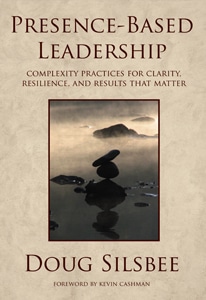
The New Book
Fast Forward 20 years, I’m doing my lifelong learning thing, working with another brilliant teacher, Doug Silsbee. He’s teaching me to coach, how to use mindfulness practices to create clarity of vision, resilience of being, and results that matter. If we’ve talked in the few years, we’ve discussed it. If we haven’t, give me a shout and we can.
Turns out that Doug has been teaching this same idea. He labels them ‘sensing, being, and acting’. I’m not sure where he picked up the ideas, I’ll have to ask him the next time we talk. He just published a book on the topic. It’s called ‘Presence Based Leadership‘. I’m really digging on it. It offers a beautiful and coherent framework for bringing self awareness to the complex lives of complex people doing complex things. The tools are simple, at at the same time very effective, including things like:
Sensing
- Observing the system around us
- Recognizing our identitiy
- Attending to our experience
Being
- Regulating the inner state
- Decouple state from context
- Embodying what matters
Acting
- Scale awareness
- Extend leadership presence
- Tune the instrument
The teachings of his new book has already worked its way into my coaching practice. If you’re curious about working with this, please feel free to reach out to me, I’d be happy to share a sample session with you.
And please, do yourself a favor and pick up these two books.
Presence Based Leadership
Prometheus Rising
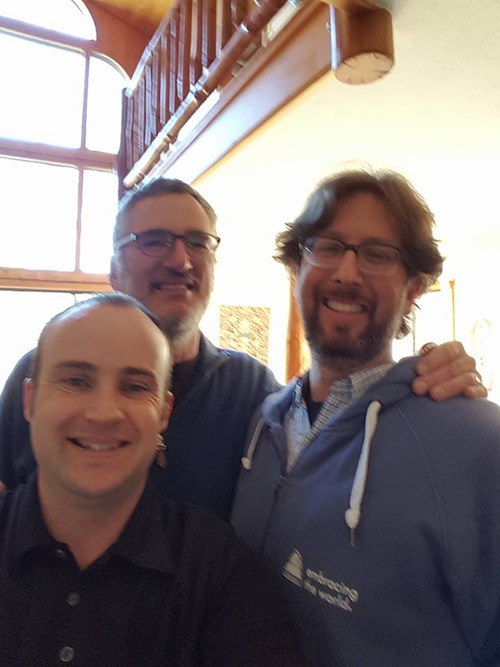
Doug Silsbee, Sitaram Das, and Rodney Allen
by Sitaram Das | Jun 4, 2016 | Book Club, poetry
Zen Poetry Is Blowing My Mind Right Now, Man
At every breath I’m happier
What’s this? Am I mad again?
I went mad once, then again.
At every breath I’m happier.
I sneeze: an explosion of ash, puff!
The city blazes, disappears.Once again I’ll build myself
A house, fire-proof, pleasant.
I begin carting bricks, with others.
The cornerstone is laid, my dream
Indestructible. But Then I sneeze-
The city rises like the phoenix.
-Shinkichi Takahashi
I was talking to an old friend from The Philadelphia Satsang the other day, and she wanted to know what I was reading. That’s one of the kind of things we talk about. Better that than gossip, right? I was excited to answer, because I’m on this Zen Poetry kick. I don’t like saying things like ‘I’m on a zen poetry kick right now’, because I think it sounds pretentious, I can hear John Cusack’s character from High Fidelity making fun of Tim Robbin’s character, ‘he wears rings and reads zen poetry’.

I went up to Oregon last month, to help my friend pick out a little school bus to transform into an rv/tiny house. On the way back down, I stopped in Eugene, my stomping grounds from 95-00. I wanted to do some of the old things I used to do. One of my old rituals was, I’d go to John Perry’s yoga class, and then I’d spend an hour or two going through the yoga section at Smith Family Books. They shared a building. It’s really where I got my initial yoga education. Their yoga book section was huge, and was mixed in with books on channeled pleiadian teachings, buddhism, shamanism. It’s where I first really dug into Ram Dass.

So, It was college, and I didn’t have a ton of money to spend on extra books. I could do the Ramen Noodle equivalent of book collecting. And so, I read what I could while I was there, and I would also look for tiny little gems, needles in haystacks. How much wisdom could I buy for the smallest amount of money? What does $3, $4 worth of enlightenment look like?
Shinkichi Takahashi
Well, this trip, $4 bought me a copy of Afterimages: Zen Poems By Shinkcihi Takahasi. Shinkichi was born in 1901, and didn’t spend his entire life cloistered. So there are modern references, of TV, of Mexico, and even some romantic references, that I didn’t quite expect:
Thistles bloom in the vast moonlight
Cup of the Mexican Sands
Thistles bloomed on the round hillock
of a woman’s heart.
And he’s funny, “Exactly thirty years ago my father died, While Autumn flowers were fading. What’s happened since? Don’t ask him-”
And at the same time profound. The poem that I opened this post really spoke to me about the way the mind moves in meditation. Creating entire worlds, destroying them, building them up again, only to have them washed away by forces beyond our control. It happens over and over again, even in a short session, and there is nothing to be done other than to continue breathing, and continue observing. We get taught that all things are impermanent, that all things appear to rise, stay for a time, and then pass away. And we internalize that insight, and start to see it in our lives. But most of the time, when we talk about it, or read about it, it is in a dry, technical way. This is, of course, problematic. Our minds, and our soul require a certain amount of poetry. Poetry shines a light into corners of our mind that a lecture (like this one) just can’t. It’s almost like a little secret. You get it, and a wry smiles crosses your lips, and you grow.
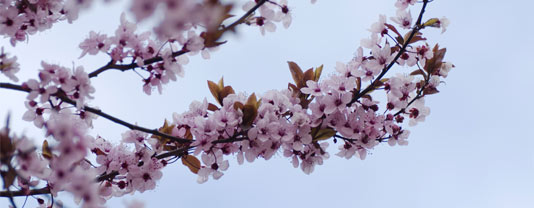
Museo Soseki
Then, Last week, I went to Great Barrington to hang out with Somya’s Family for a little while. Great Barrington is just a town over from Kripalu, so I figured they might have a couple of good used bookstores. We found Yellow House Books. Nice Spot. I got Somya book on Ayurvedic Tongue Diagnosis, stumbled upon a book on Maori Tattooing for my pal Salem, who owns Eye of The Tiger Tattoo, and splurged on another book of Zen Poetry for myself, forking over a whole nine bucks to pick up a copy of Muso Soseki’s Sun At Midnight.

Muso is much more old school. Born in 1275, he lived as a monk from a very early age, and sought a ‘special transmission outside the scriptures’. He became well respected for his insight, so much so, that several warlords and emperors all sought his audience, asking him to live at their various temples. In his later years, he took to tending the temple gardens, and is known as the father of the zen rock garden. Much of his work still stands today.
It is said that he attained enlightenment late in the evening while walking through his hermitage. He had no light, but thought he knew exactly where he was. He put his hand out to steady himself on a wall that was supposed to be there, and instead, found himself lying on the ground. In this moment, he broke through to the other side. He then wrote his satori poem, which is as follows:
Year after year
I dug in the earth
Looking for the blue of heaven
Only to feel
the pile of dirt
choking me
Until once in the dead of night
I tripped on a broken brick
and kicked it into the air
and saw that without a thought
I had smashed the bones
of the empty sky
And this is why I practice. It’s almost instinct to dig with the rational mind, to try to figure out heaven, to try to computate our way into heaven, and it never works. I need to be reminded to that the sky is above me, and all I need to do is lift my head up, and breathe it in.
It only gets better from there. Muso is full of them. I’d love for you to hear more of them, but I really don’t want to type them out any more. Pick up a copy for yourself, your students will thank you.
——–
And, if you liked this article, come and talk about this sort of subject with me at My Next Yin Yoga Weekend. Click Here To Find Out More. Its going to be a whole weekend of empty sky.
by Sitaram Das | May 17, 2011 | Book Club
 Listening to one of Tara Brach’s podcasts, I heard her saysomething to the effect of, “for teachers, good stories are like gold”. She went on to say how she and her colleauges read and study trying to dig up the best stories for their classes. There is even a bit of lighthearted competition, to see who can find the best story first.
Listening to one of Tara Brach’s podcasts, I heard her saysomething to the effect of, “for teachers, good stories are like gold”. She went on to say how she and her colleauges read and study trying to dig up the best stories for their classes. There is even a bit of lighthearted competition, to see who can find the best story first.
I also find my self diving into media both sacred and secular, attempting to glean something valuable, something I can sit with and savor, and something that I can share with my students.
I was thrilled to find “Wisdom’s Blossoms” in the used bookstore the other day. A lovely collection of short biorgraphies, it gives us a glimpse into the lives of many great saints, and yogis. We are treated to delightful portraits of pivotial movents that shaped our spiritual ancestors.
The authors took inspiration for this book from the Bhagavad Gita. The Gita itself is amazingly fantastic guide to yoga lifestyle and practice. A yoga teacher will probably want a couple of different translations, just to be able to look at it from different perspectives. Anyway, in Chapter 16, Krishna tells Arjuna that the devout and successful practitioner possesses certain qualities, such as “ Fearlessness, purity of heart, perserverance in aquiring knowledge and in practicing yoga, charity…Non-injury, truthfulness, freedom from wrath…radiance of character, forgiveness, patience…” (God Talks with Arjuna: The Bhagavad Gita, Paramahamsa Yogananda).
Krishna lists 26 qualities, and there are 26 corresponding stories in ‘Blossoms’. Milarepa’s life exlemplifies perserverence, and The Buddha teaches nonviolence. Jnaneshwar, a great saint who, coincidentally, penned an inspired translation of the Bhagavad Gita, offers a lesson in modesty. The Great Sikh Guru, Tegh Bahadur, embodies fearlessness. In a very beautiful way, the authors include both men and women, and masters from many traditions. The book is structured so that we can enjoy a single story at a time, or devour the whole book at once. Its a really nice addition to my library, and it might be to yours, as well. Enjoy!
Pick up your copy today by clicking here!
by Sitaram Das | Jan 3, 2010 | Book Club

A few new books made their way into The Library recently, under some fairly auspicious circumstances. The first two books, The Play of God: Visions of the Life of Krishna and There Are No Secrets: Professor Cheng Man Ch’ing and His T’ai Chi Chuan
and There Are No Secrets: Professor Cheng Man Ch’ing and His T’ai Chi Chuan , I found one fine morning strolling the streets of Brooklyn. After a delightful breakfast with a dear old friend, we wandered past three big boxes of books on the street. There were a few other book hounds rifling through, and I just couldn’t help but take a moment. How delightful that these two books jumped out!
, I found one fine morning strolling the streets of Brooklyn. After a delightful breakfast with a dear old friend, we wandered past three big boxes of books on the street. There were a few other book hounds rifling through, and I just couldn’t help but take a moment. How delightful that these two books jumped out!
I have only had the chance to briefly go through them, but it appears that ‘The Play’ takes a comprehensive view of Krishna’s entire life, sharing his exploits from His Childhood stealing butter, to his part in the fierce battle of the Mahabharata.
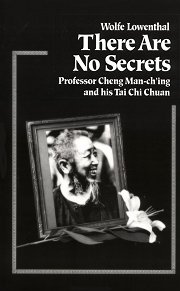
‘No Secrets’ is one of those totally cool spiritual memoirs written about a teacher by one of their students. These books are fun; the students love to raise the teacher up to superhuman status, with great wisdom and mystical powers. The Professor in this story does not disappoint. Very enjoyable, so far.
The Third book, Chod in the Ganden Tradition: The Oral Instructions of Kyabje Zong Rinpoche , I found at a bookstore 50% off. Not as magical as finding it in a box on the street, but still very fortunate. I enjoy delving into the depths of Chod, in both practical and theoretical ways, and this text seems to fit the bill. Its author, Kyabje Zong Rinpoche, seems to be qualified. He is pictured above, playing the traditional Chod Drum.
, I found at a bookstore 50% off. Not as magical as finding it in a box on the street, but still very fortunate. I enjoy delving into the depths of Chod, in both practical and theoretical ways, and this text seems to fit the bill. Its author, Kyabje Zong Rinpoche, seems to be qualified. He is pictured above, playing the traditional Chod Drum.
You can find these books here:
The Play of God: Visions of the Life of Krishna
There Are No Secrets: Professor Cheng Man Ch’ing and His T’ai Chi Chuan
Chod in the Ganden Tradition: The Oral Instructions of Kyabje Zong Rinpoche
by Sitaram Das | Dec 24, 2009 | Book Club

Siddhar Thirumoolar
I discovered a new text recently. Love it. From the Tamil, Southern India, The Thirumandiram has a slightly different vibe from the northern, Kashmiri literature that I am a little more used to. These teachings of Siddhar Thirumoolar are said to be the seed that later blossomed into Saiva Siddhanta, a very heartfelt and devotional approach to the worship of Shiva and the understanding of the universe.
The book is three separate volumes, and contains nine Tantras within. I’ve perused up to Tantra five, at which point it was clear to me that I need to spend some more time with the first four. Which is fine, because they are plenty remarkable.
I want to share with you the first verse of the first Tantra. It is delightful, full of Bhakti, and much like the first sutra of Patanjali’s Yoga Sutras, seems to sum up the whole deal. If you think I’m wrong, I’m happy to hear your argument. I am new to this text, after all.
He came down from heaven, clothed in body,
Karma to match, stretched forth His cool Feet of Grace, from time immemorial
And lo! inside me He stood, melting my yielding heart;
And filled my eyes with peerless bliss, past all compare,
All impurity dispelled.
This one verb, it really does it for me, it’s a verb that shows up in other verses, and also, in the intro. It’s all about the melting. The goal, is to melt the heart into the universal love of Shiva, and to melt the mind and ego into His universal consciousness. It is similar to the melting that happens to salt when it is placed into water.
To make this practical, one can visualize their body as if it were made of a solid block of salt. Perhaps that lovely pink Himalayan mountain salt. Then one can meditate on the body melting and dissolving into a vast ocean. One realizes that the individual self is not extinguished or negated by this melting. Instead, there is the experience of expanding into and merging with this vastness. We find that while the small self still exists, the wondrous bliss of Shiva’s reality supersedes petty individual concerns.
I highly recommend this book, and wil be posting more about it in the coming weeks. The practices in the book, along with the devotional reminders can powerfully orient the mind toward the ultimate and support our soul’s illumination.
by Sitaram Das | Dec 15, 2009 | Book Club

When I was at Bhakti Fest in Joshua Tree last month, i met a man named Lorin Roche. He was a scholar and meditation teacher, and had spent several years working on a beautiful, poetic, practical, and accessible version of The Vijnana Bhairava tantra. The vbt is a delightful text that outlines powerful meditation techniques that can be used both on and off the mat, and allow one to see the sacred in all phenomenon. I really enjoyed meeting him, and taking his workshop, and I really enjoy the text. In fact, I used a reading from it in the wedding I performed just recently.
Be Wildly devoted to someone, or something.
Cherish every perception.
At the same time, forget about control.
Allow the Beloved to be itself and to change.
Passion and compassion, holding and letting go,
This ache in your heart is holy.
Accept it as the rise of intimacy
With life’s secret ways.
Devotion is the Divine Streaming through you
From that place in you before time.
Love’s energy flows through your body,
Towards a body, and into eternity again.
Surrender to this current of devotion
And become one with the Body of Love.
So check him out, he has alot of fantastic readings on his website, which i have been enjoying very much
http://www.lorinroche.com



